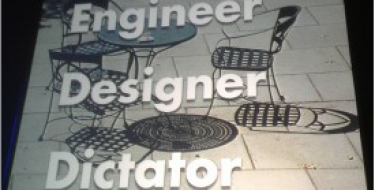Kinetic Energy, People!
I recently attended a workshop series called UX Intensive, hosted by Adaptive Path. For four days, I and about 100 other web enthusiasts examined four key elements that contribute to a successful website design: Design Strategy, Design Research, Information Architecture, and Interaction Design. I've put together a list of four insights to better web design, one for each day of the week.
The last day of the conference focused primarily on Interaction Design. The phrase itself sounds a bit abstract, but the meaning behind the phrase is just the opposite. Interaction Design is the act of ideating, modeling, and, ultimately, prototyping your end product—in our case, a website.
Interaction Design comes after we've defined our scope, researched our end user, and defined an information architecture. Only after these crucial steps have been taken can we put it all together and make something with it.
Ideation
Ideating, formerly brainstorming, is key to any good group project. After all, two heads are better than one, unless of course we're talking snakes.
Three Keys to Ideation:
- Get it up on the wall. At Digett, we often write and draw on our giant white boards, but I've always been fascinated with writing ideas on sticky notes and posting them up on the wall. However you do it, make it so that you can physically move ideas around, group them, or single them out. This makes it easy to focus on individual ideas but also see everything at once and think about the big picture. Also, it tends to keep people engaged. Kinetic energy, people!
- Involve the client. The client is a great asset at this stage, so let them sit in on these ideation sessions. They'll often have ideas of their own, from a perspective that we don't have. And, in the end, they're much more likely to be happy with product that they helped create.
- Keep the peace. I just learned a new phrase, "An asynchronous conversation." Don't pretend like you know what it means, I'll tell you now. It means one person speaks at a time. Too often, brainstorming sessions turn into yelling matches. Let everyone have a chance to speak, one at a time, and you'll find that more gets done.
Modeling
Modeling, here at Digett, comes in the form of wireframes. We take our wealth of ideas and accumulated knowledge and work together to model a website. Working together at this stage is still important. Getting input from a developer, a designer, and a project manager is important to creating a well-rounded model that clearly defines key elements to include on each page, the amount of importance to place on those elements, and how they interact with one another.
Prototyping
It would be strange to talk about prototypes in a broad sense, because they are so specific to what your end product is. As I said before, we do websites, so I like to think of our prototype as our initial design. At this stage, a designer steps in to take the wireframe to the next level, make it look good, put it's face on, if you will. I won't get into the intricacies of design, I'll save that for a post down the road.
So that's it folks, the final day of my Austin seminar, all about user experience. Take some time to read through these posts and get an idea of what I learned and some insight on how we apply it here at Digett.
MONTHLY MARKETING INSIGHTS.
Get thought-provoking and actionable insights to improve how your firm makes a connection with your customers.





LEAVE A COMMENT